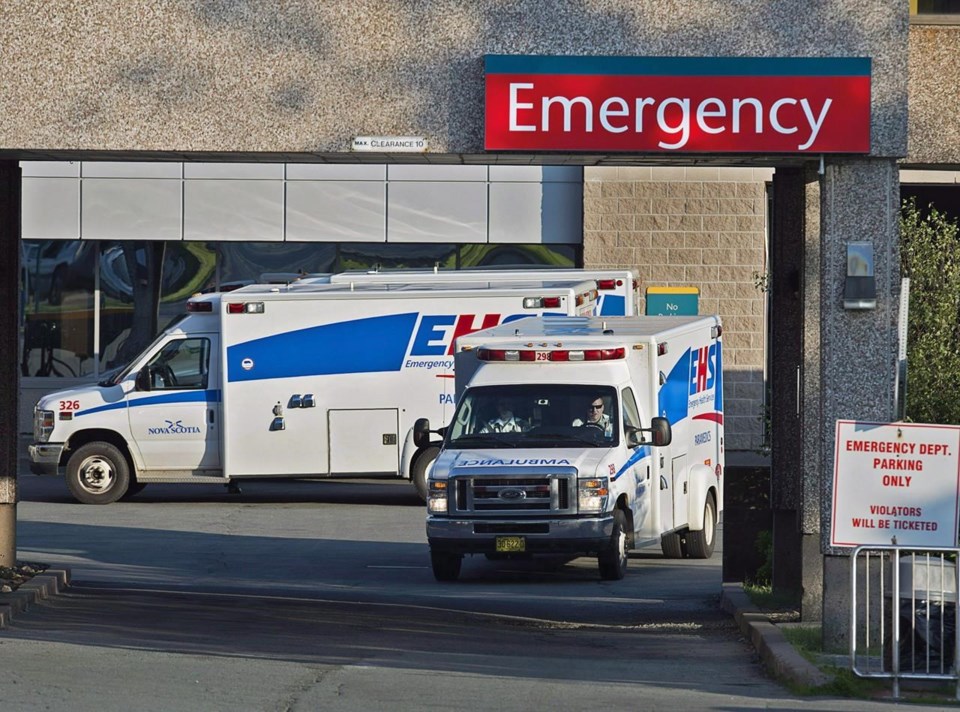HALIFAX — Deaths in Nova Scotia emergency rooms were up 10 per cent in 2022 from the previous year, an increase that a Nova Scotia Health official says was “not unexpected” as more patients — and patients with more acute needs — visited ERs.
Alyson Lamb, the executive director of health services with Nova Scotia Health’s western zone, said in an interview Wednesday that the increase in ER deaths reflects the level of activity hospitals experienced last year.
“Any death is not what we want, but the number (of deaths) based on what we saw in 2022 is not unexpected,” Lamb said.
According to health data obtained by the Nova Scotia NDP through a freedom of information request, 558 people — or 0.11 per cent of ER patients — died in emergency departments across the province last year, up from 505 in 2021.
Lamb said the change in ER patient deaths represents “a normal deviation in that data” but added that “for the family and the patients, it’s life-shattering and life-changing.”
“Unfortunately we can’t save everyone, and not because we don’t want to," she said.
The figures, which cover Nova Scotia’s four health zones from 2017 through 2022, show that last year’s death total was the highest during the six years. It was also the highest percentage of deaths among ER patients during the period.
In 2017, 2018 and 2021, the percentage of ER patients who died was 0.09, and in 2019 and 2020 the figure was 0.08 per cent.
Death totals in emergency departments have fluctuated over the six-year period, with the fewest ER deaths recorded at 393 in 2020 and the second most occurring in 2018, with 531.
The issue of ER deaths in Nova Scotia has been in the news following the death of 37-year-old Allison Holthoff, who died on Dec. 31 after a seven-hour wait at the Cumberland Regional Health Centre emergency department in Amherst, N.S.
NDP member of the legislature Susan Leblanc said in an interview Wednesday that news of Holthoff’s death has sparked major concern among Nova Scotians about the state of the province’s emergency departments, and she called the increase in ER deaths in 2022 disturbing.
“People right now are worried about what happens if they need to go to an emergency department or they need to call an ambulance,” she said.
Lamb said that Nova Scotians should not avoid the emergency room if they have acute health needs and "should be confident that if they have an emergency they should attend to it and access the care they need."
However, "there is no question we’re seeing increased volume of patients and acuity of patients currently and depending on when someone may access care, the wait time may be longer than expected," she said.
Leblanc said in order to alleviate stress on ERs, the province needs to ensure “timely access” to primary care to keep emergency departments available for acute needs. Government must also work on improving health-care worker staffing levels and retention, she said.
“We have to make sure that emergency departments are fully staffed and that staff are able to work to the best of their ability without being burned out,” she said.
A report released by the province on Dec. 22 showed that emergency room closures due to staffing shortages have more than doubled year over year.
Lamb said the health authority is actively working on recruitment and retention of health staff. "We know there are shortages across the country ... as it relates to health-care providers, and in Nova Scotia we're not any different," she said.
In 2022, the province's central zone, which includes Halifax and the surrounding area, had the most emergency room deaths, with 289. The next highest number was 126 in the western zone, which covers the South Shore and Annapolis Valley.
This report by The Canadian Press was first published Jan. 11, 2023.
---
This story was produced with the financial assistance of the Meta and Canadian Press News Fellowship.
Lyndsay Armstrong, The Canadian Press



